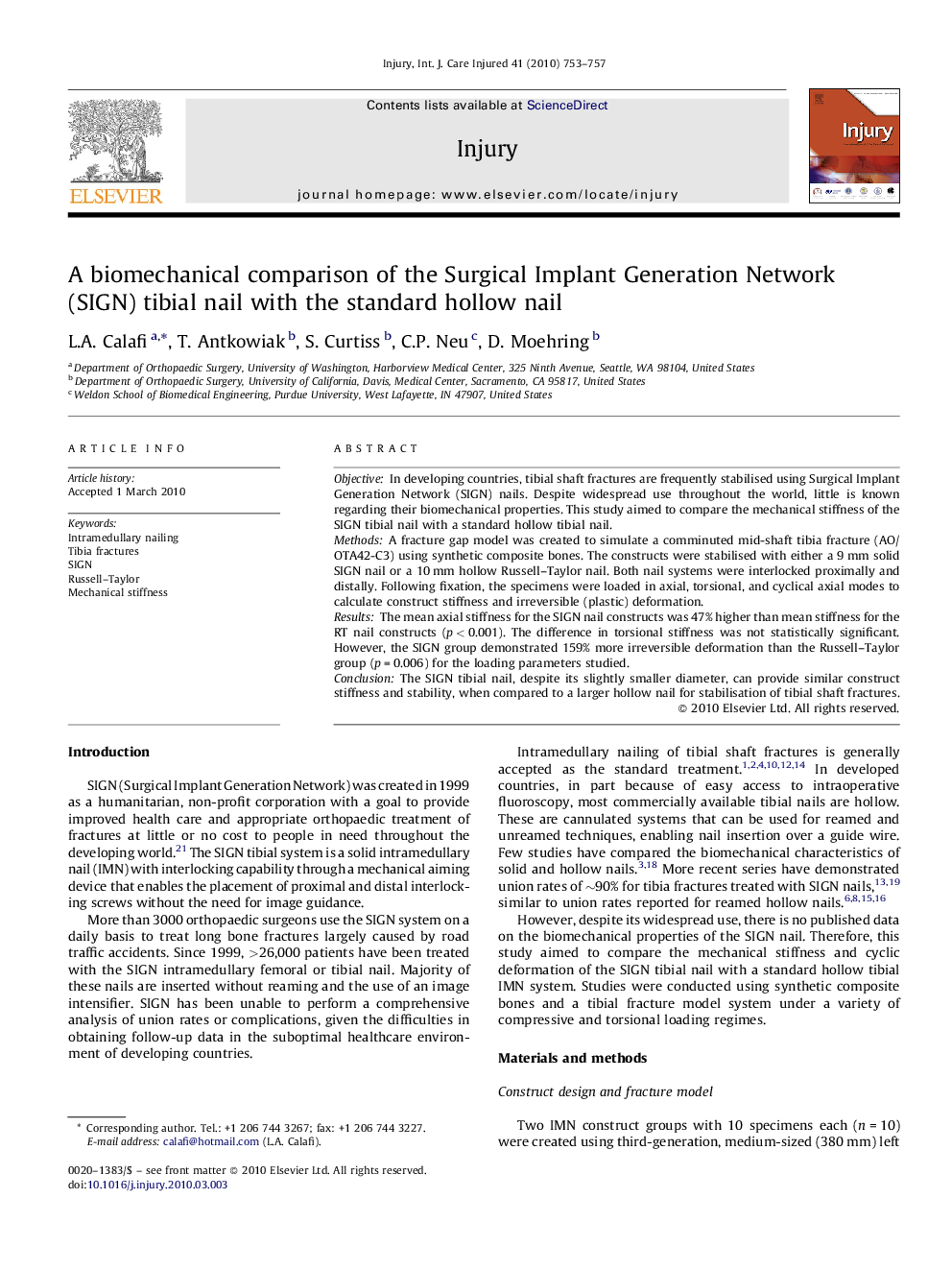| کد مقاله | کد نشریه | سال انتشار | مقاله انگلیسی | نسخه تمام متن |
|---|---|---|---|---|
| 3240176 | 1206034 | 2010 | 5 صفحه PDF | دانلود رایگان |

ObjectiveIn developing countries, tibial shaft fractures are frequently stabilised using Surgical Implant Generation Network (SIGN) nails. Despite widespread use throughout the world, little is known regarding their biomechanical properties. This study aimed to compare the mechanical stiffness of the SIGN tibial nail with a standard hollow tibial nail.MethodsA fracture gap model was created to simulate a comminuted mid-shaft tibia fracture (AO/OTA42-C3) using synthetic composite bones. The constructs were stabilised with either a 9 mm solid SIGN nail or a 10 mm hollow Russell–Taylor nail. Both nail systems were interlocked proximally and distally. Following fixation, the specimens were loaded in axial, torsional, and cyclical axial modes to calculate construct stiffness and irreversible (plastic) deformation.ResultsThe mean axial stiffness for the SIGN nail constructs was 47% higher than mean stiffness for the RT nail constructs (p < 0.001). The difference in torsional stiffness was not statistically significant. However, the SIGN group demonstrated 159% more irreversible deformation than the Russell–Taylor group (p = 0.006) for the loading parameters studied.ConclusionThe SIGN tibial nail, despite its slightly smaller diameter, can provide similar construct stiffness and stability, when compared to a larger hollow nail for stabilisation of tibial shaft fractures.
Journal: Injury - Volume 41, Issue 7, July 2010, Pages 753–757